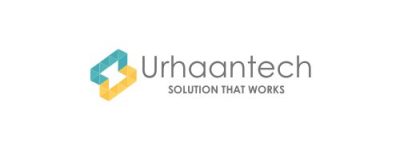When deploying ServiceNow Human Resources Service Delivery (HRSD), it’s crucial to understand the difference between the core Lifecycle Events plugin and the Lifecycle Events Enterprise plugin (often associated with the Enterprise Onboarding and Transitions application).
While both plugins provide the framework for managing complex employee journeys, the distinction is critical: it determines which departments can participate in the automated fulfillment and how complex your end-to-end workflows can be.
1. The Key Difference: Scope of Fulfillment and Licensing
Functionally, both modules manage employee journeys (like onboarding, transfers, or offboarding) by using Activity Sets and Activities (tasks). The difference lies entirely in licensing and the groups that can be assigned work:
| Module / Plugin | Required HRSD License | Fulfillment Scope | Core Purpose |
| Lifecycle Events | HRSD Professional | Limited strictly to HR fulfillment groups. | Managing simple events or core HR processes where all fulfillment tasks are handled entirely by HR staff. |
| Lifecycle Events Enterprise | HRSD Enterprise | Unlocks cross-departmental/multi-departmental fulfillment. | Managing complex, end-to-end employee journeys that involve automated coordination across the entire organization. |
The Enterprise version is what allows the HR case to seamlessly orchestrate workflows and assign work to non-HR teams like IT, Finance, or Facilities.
2. Unlocked Capabilities: The Power of Enterprise
The Lifecycle Events Enterprise plugin enables several advanced features essential for large organizations that the standard Professional license does not support in the same cross-departmental context.
| Feature | Standard (Professional) | Enterprise (Enterprise) |
| Triggering Non-HR Workflows | Limited to HR tasks only. | Automatically generates IT Requests (RITMs), Incidents, or Facilities Tasks from the Lifecycle Event case. |
| Fulfillment Visibility | HR fulfillers can only see HR-related tasks. | Provides full, central visibility of all cross-departmental work (HR, IT, Finance, etc.) to the Lifecycle Event owner. |
| Activity Set Configuration | Focus on simple HR-to-HR dependencies. | Allows complex dependencies and branching, enabling different paths based on employee data (e.g., location, department, job role). |
| Pre-Hire Onboarding | Not explicitly supported for non-HR tasks. | Supports pre-day-one onboarding by triggering non-HR tasks (e.g., IT hardware procurement) before the employee’s start date. |
| Process Ownership | The process begins and ends strictly within HR. | HR acts as the orchestrator for the entire employee journey, coordinating the work of all departments. |
Advanced Examples of Orchestration
Here’s how the Enterprise version enables true organizational integration:
- Automated Service Catalog Requests: Instead of an HR agent manually ordering a laptop for a new hire, the Enterprise Lifecycle Event can automatically submit a Service Catalog Request (RITM) to the IT department for a “Standard Workstation Package” the moment the background check activity is completed.
- Location-Based Branching: For a transfer event, the system can automatically check the employee’s new location. If the location is international, it triggers a dedicated Tax and Visa Activity Set for the Finance/Legal teams; if it’s domestic, it only triggers a simple Facilities Move Activity Set.
- Third-Party System Integration: The Lifecycle Event can trigger integrations that, for example, notify a third-party background check provider to begin its process, and then waits for the result before advancing to the next activity set.
3. Conclusion
If your goal is to manage a simple, HR-only process, the HRSD Professional license with its Lifecycle Events plugin may suffice.
However, if you aim to build seamless, automated, and comprehensive employee experiences—such as a complete new hire journey that coordinates HR forms, IT equipment, Facilities setup, and Finance payroll updates—you require the HRSD Enterprise license and the advanced Lifecycle Events Enterprise functionality. This is the only way to effectively break down department silos and truly integrate your HR processes with the rest of the enterprise.
That’s an excellent follow-up question. In ServiceNow, the core functionalities are delivered through specific plugins.
The plugins associated with these two levels of functionality in HRSD (Human Resources Service Delivery) are:
| Functionality Level | Associated ServiceNow License | Primary Plugin Name | Plugin ID |
| Lifecycle Events (Standard) | HRSD Professional | Human Resources Scoped App: Lifecycle Events | com.sn_hr_lifecycle_events |
| Lifecycle Events Enterprise | HRSD Enterprise | Human Resources Scoped App: Lifecycle Events for Enterprise | com.sn_hr_lifecycle_ent |
Key Takeaway on Plugins:
- The Enterprise plugin (
com.sn_hr_lifecycle_ent) is an extension of the standard plugin. It unlocks the functionality and tables necessary to integrate with non-HR departments (like IT, Legal, and Facilities) and is associated with the higher-tier HRSD Enterprise license. - The term “Enterprise Onboarding and Transitions” is often used as the user-facing application name that relies on these Enterprise plugins.

